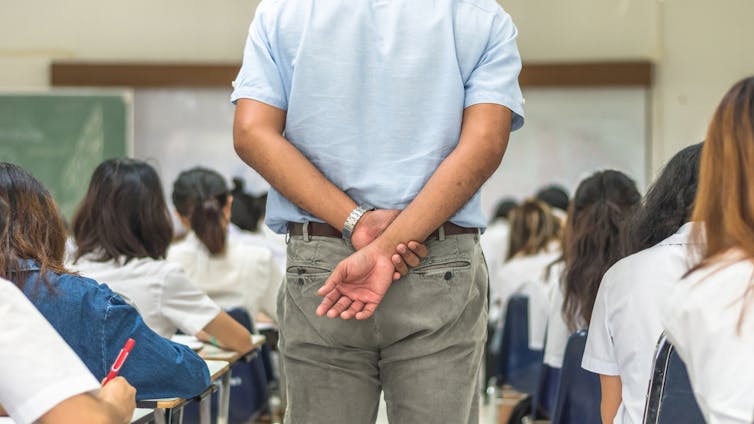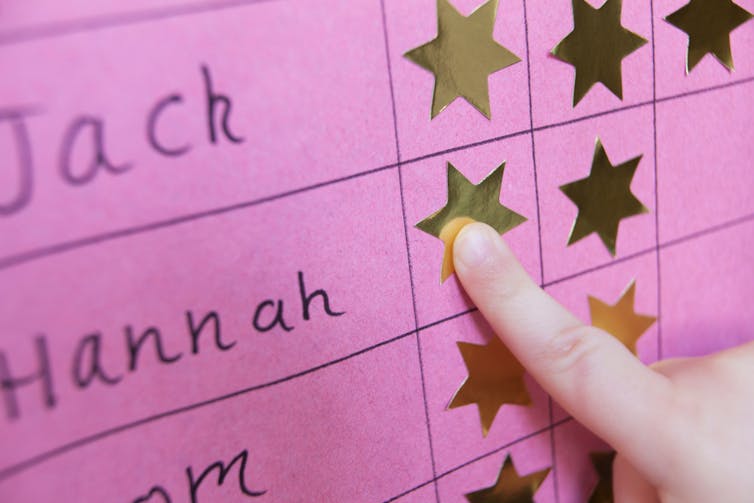Digitally tracking student behaviour in the classroom encourages compliance, not learning
- Written by Jamie Manolev, Research assistant, University of South Australia
ClassDojo is one of the most popular classroom communication apps in the world. It claims to assist teachers to create happier classrooms and bills itself as “the simple way to build an amazing classroom community”.
Since it was released in 2011, it has rapidly spread to be used in more than 180 countries worldwide and over half of Australian primary schools. But new research looks beneath ClassDojo’s friendly exterior to carefully consider the implications of tracking student data on discipline and behaviour.
Read more: Teachers shouldn't have to manage behaviour issues by themselves – schools need to support them
It’s important teachers, parents and school leaders look more closely at how it works, especially because its use of surveillance, competition and long-lasting behaviour records influence classroom learning and students.
Why is ClassDojo so popular with teachers?
Teachers use ClassDojo to manage classrooms and student behaviour, and as a platform to communicate with parents. It’s colourful, friendly and easy to use. And it’s free.
How does the behaviour component of ClassDojo work?
The ClassDojo feedback feature works like a traditional classroom points system, but records more information and is done using a computer, iPad or smart-phone. It is an electronic way of tracking student behaviours and providing immediate feedback to students and parents.
Teachers can award positive or negative points to students for displaying a range of behaviours. They can use ClassDojo to provide visual and audio cues to students that reflect the positive and negative feedback.
“Positive” feedback is coloured green and arrives with a pleasant ding sound. “Needs work” feedback is coloured red and arrives with a harsh buzz sound. These cues can be used publicly so the whole class is made aware feedback has been given.
Over time, points accumulate to produce a personal behaviour score. ClassDojo automatically tracks and stores every piece of student feedback data. This allows teachers to create reports on students that show data on:
details of the behaviour or skill points are awarded for
the time and date when points were awarded
number of accumulated “positive” points
number of accumulated “needs work” points.
Reports provide a green and red donut chart and percentages of “positive” and “needs work” points awarded. These behaviour reports can be easily shared with parents.
Why should we be concerned?
ClassDojo encourages surveillance. For example, its surveillance techniques include:
teachers monitoring students constantly to award points, positive or negative
public displays of class points on large classroom screens making each student’s behaviour score visible to anybody in the class
building student behaviour profiles that can be viewed by teachers, parents and school leaders throughout their schooling
parents can be notified via text message whenever their child receives behaviour feedback in the form of points
registered parents are reminded via a weekly email to check their child’s behaviour profile report.
 Too much surveillance is not good for students.
from www.shutterstock.com
Too much surveillance is not good for students.
from www.shutterstock.com
Surveillance
Too much surveillance is not good for kids. This level of surveillance used to monitor and influence student behaviour focuses on controlling them to behave in certain ways. It’s a way of promoting compliance and conformity.
Having control in the classroom is important, but this is different to controlling students. Controlled students get little chance to learn how to make sensible decisions about their own behaviour. They rely on others to tell them.
Experts argue surveillance erodes trust and has a chilling effect on creativity. They also indicate students take fewer risks because their mistakes might count against them.
Encouraging risk-taking is important and improves students’ learning. And, negative student data profiles can influence the way teachers regard their students.
Competition
Points systems and rankings promote competitive environments. These are fine in some circumstances, such as in competitive sports, but not as the main way of supporting students in classrooms.
Competitive environments create conflict and unease, particularly for students who find themselves regularly at the bottom. And when positive and negative ClassDojo points are publicly announced it can humiliate or shame students. This affects students’ attitudes to learning.
Long lasting behaviour records
The creation of digital behaviour profiles on students could have a long-lasting impact. Old fashioned points systems such as star charts were temporary, had a short life, and weren’t terribly effective. ClassDojo collects and retains all recorded data on students.
 Star charts were temporary, but not very effective.
from www.shutterstock.com
Star charts were temporary, but not very effective.
from www.shutterstock.com
Concerns have been raised over who owns this behaviour data and how it might be used in the future. There is potential for behavioural data profiles to follow students through school. It’s too early to tell how they might be used in the future and what problems this might present.
What should schools do?
Teachers should approach school discipline in an educational manner. They should see behaviour in a similar way to curriculum – something that can be taught.
Teachers should understand the ways their teaching and the curriculum influence student behaviour. They should seriously reconsider using technology to monitor behaviour because of the negative impact it could have on students.
Schools need to create safe and secure environments that are orderly and allow learning to happen. This doesn’t mean students need to be controlled though constant surveillance. Simply controlling student behaviour has little educational value. This approach provides a disservice to our students.
Read more: How teachers are taught to discipline a classroom might not be the best way
School discipline should be about building respectful relationships and educating students about how, why and when certain behaviours are appropriate. This will support students to become successful, independent learners and citizens.
This educational approach is supported by classroom management and school discipline research which says schools should focus on relational aspects of schooling based on respect, dignity and caring. Schools should also make sure their approach to discipline is learning-oriented and seeks to develop self-regulation and trust.
Authors: Jamie Manolev, Research assistant, University of South Australia





